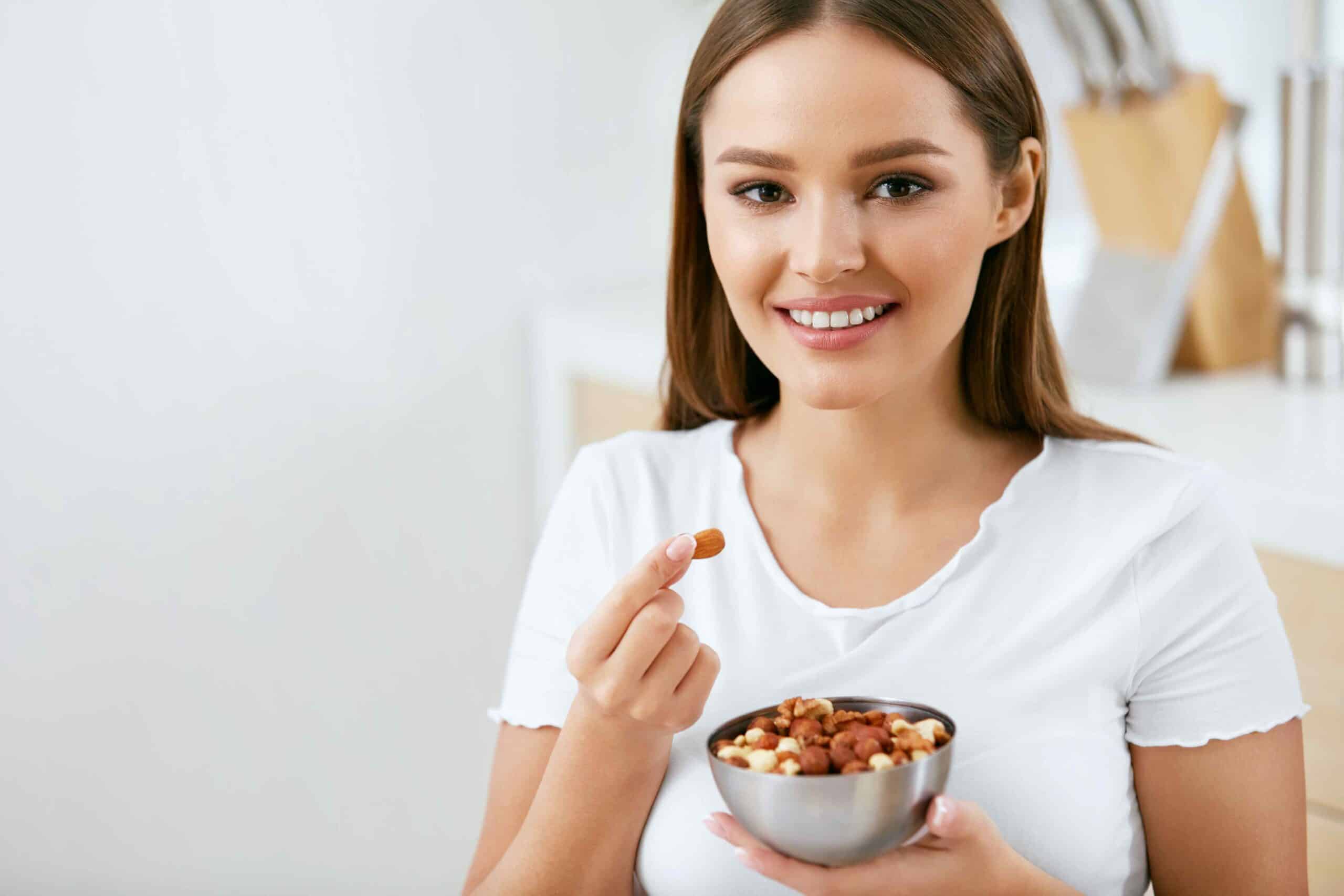Fiber is a type of carbohydrate that helps you feel full and leads to many health benefits! It can also help lower cholesterol and slow digestion so that your body absorbs fewer calories from your food. People who eat high-fiber diets are less likely to be overweight or develop heart disease or diabetes.

The more fiber you get in your diet, the better off you are – but don't go overboard on it! Too much fiber may cause bloating or gas as well as constipation if you do not keep up with your water consumption! If you’re looking for a list of high-fibrous snacks, look no further. But make sure to include water intake while consuming these delicious, fibrous snacks below!
Nuts
Nuts are a great source of fiber, and they can help you feel satiated. The best part is that you can put a handful in your purse, gym bag, or car to grab when those hunger pangs take place, which of course, always happens right when you are passing by that delicious In-N-Out Burger Restaurant. Although nuts are also high in calories, they are a better decision when you are in a hunger pinch than resorting to a fast food restaurant.
Get The Most Out of Your Nut Intake:
- Buy raw, unsalted nuts. You'll save money over buying pre-roasted varieties and control how much salt goes into your snacks.
- Mix up what kind of nuts you eat by trying new types like pistachios or hazelnuts that offer different flavors and textures than standard peanuts or almonds.
Whole Grains
A great way to get fiber and other nutrients is by eating whole grains. Whole grains provide fiber, protein, vitamins, minerals, and carbohydrates. They are also a better option because they do not spike your blood sugar as quickly as white breads do!
Whole-grain foods can be found in bread, cereals, pasta, and rice. Some examples of whole-grain foods include:
- Whole wheat bread or crackers
- Oatmeal (not instant) with fresh fruit (preferably fruit high in fiber, such as strawberries).
- Brown rice
Beans and Lentils
Beans, beans, the magical fruit! Beans and lentils are good sources of fiber, protein, iron and magnesium. They're also high in B vitamins and potassium.
The fiber in beans helps to keep you full longer, so you eat less at mealtime. Beans are also rich in antioxidants that may reduce the risk of heart disease by lowering blood pressure and improving cholesterol levels.
Fruits and Vegetables
If you are craving something sweet, the fruit may be your best friend. Fruit is high in fiber, a great source of vitamins such as C or potassium, and keeps you from reaching for the chocolate you are trying to cut out! Some high-fiber fruits that you can include in your diet are apples, pears, and berries. Check out our article on the best fruits to buy at the market!
Vegetables are one of the best sources of fiber, and they're good for you too. They can be eaten raw, cooked, or roasted and are versatile enough to go with almost anything!
Chia Seeds
Chia seeds are those tiny little black beads you see all the cool hipsters eating. These magical seeds expand with liquid in your stomach, so once you eat them, they grow in size and keep your stomach from screaming with hunger! They are a fantastic fiber source and help balance blood sugar throughout the day.
Add Variety to Your Diet
Eat a variety of foods every day! Variety is key when it comes to getting all the vitamins and minerals we need from food because different sources provide different nutrients at various levels.
For example, one type of fruit might contain more vitamin C than another type. Some beans have a higher fiber content than others, and so on. Just make sure there's something new on your plate every day! And feel free to combine any of these snacks together. Fruit and nuts are always a good option to combine, or try sprinkling some chia seeds over your strawberries!

Tell Us What You Think